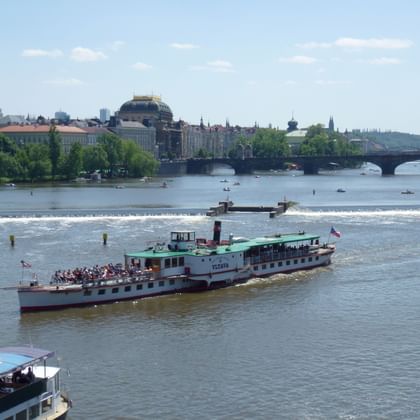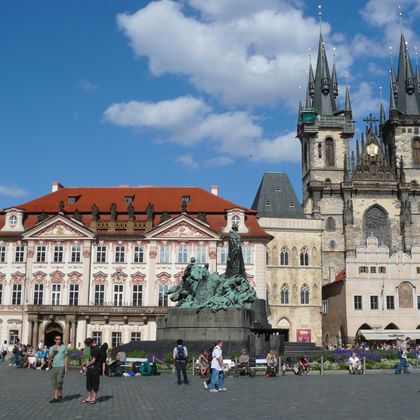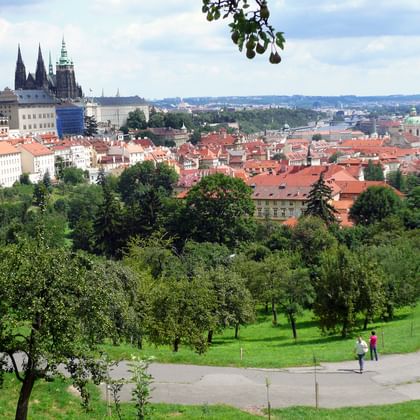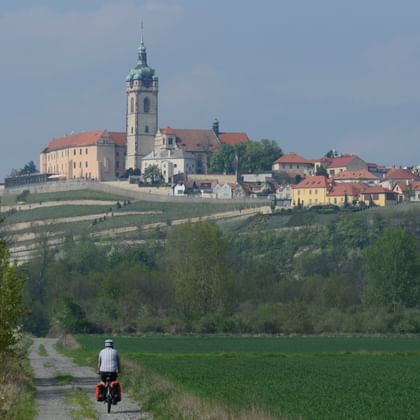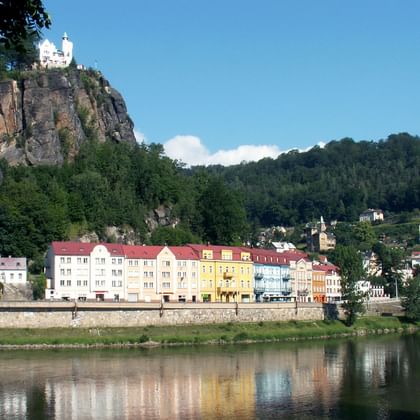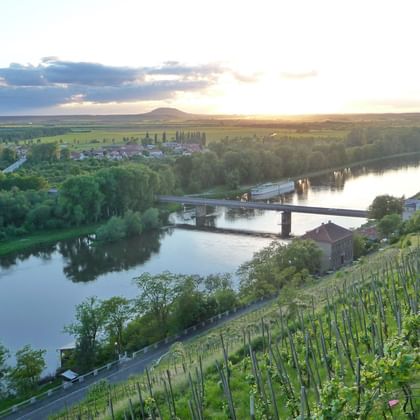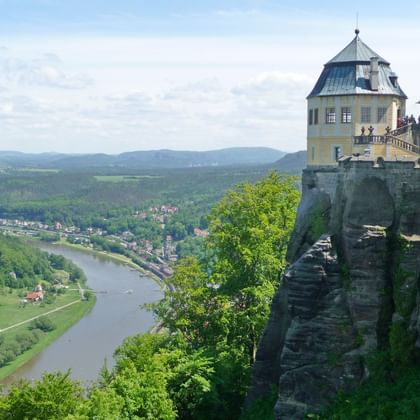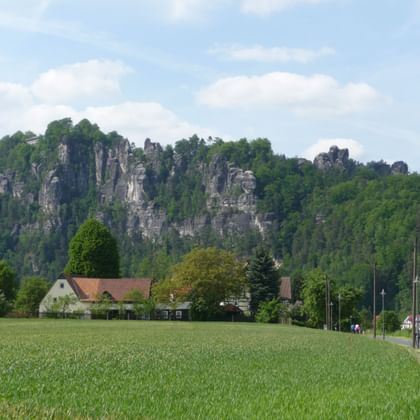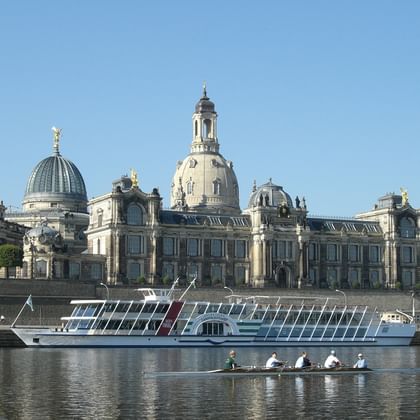Tour
Plan your journey early, as Prague has a lot to offer and discover. If you are travelling by car, we recommend travelling to Dresden and using our return transfer service to Prague. In the evening, there will be an information meeting and the handover of the booked rental bikes.
Today is all about Prague's sights. Climb up to Hradčany and take in the sweeping views of the city. Stroll across the famous Charles Bridge, explore the lively Old Town with its diverse shops and let yourself be carried away by the vibrant nightlife. Prague is rich in culture and history – filled with so many impressions, this day will fly by.
Your journey begins in the green Stromovka Park, where you leave Prague behind and head north. Soon, the Vltava River accompanies you through quiet meadows, past the magnificent Troja Castle and idyllic villages that lie like little gems along the way. In Veltrusy, the baroque castle park invites you to take a well-deserved break before you cross the river by ferry. Finally, you reach Melník, picturesquely situated on a hill where the Vltava and Elbe rivers converge. The castle, historic old town and surrounding vineyards give this place a very special flair.
Hop on your bike and enjoy the ride: your route takes you north along the picturesque vineyards of Mělník, where fine wines such as the famous Ludmilla are produced. Enjoy the views of the rolling vineyards before you enter the traditional hop-growing region around Litoměřice. Shortly before your destination, Terezín invites you to make a moving stopover: today's National Cultural and Memorial Site offers impressive guided tours and commemorates the eventful history of the place, which gained sad notoriety as Theresienstadt during the Second World War.
Before you set off, it's worth taking a last stroll across Litoměřice's spacious market square, whose colourful façades make for a wonderful photo opportunity – especially at the impressive Chalice House. From here, your route continues along the Elbe, past the ruins of Střekov Castle, perched on a 100-metre-high rock, and through Ústí nad Labem. Rolling gently up and down, you finally arrive in Děčín, where the magnificent Baroque castle with its splendid view over the river crowns your stage.
After crossing the border into Germany, you will soon encounter the fascinating rock formations of the Elbe Sandstone Mountains. Your route takes you along the banks of the Elbe to the imposing Königstein Fortress, the largest mountain fortress in Europe. A tour of the mighty walls and the magnificent panoramic view of the Elbe Valley are definitely worthwhile. In the evening, you will reach Pirna, where you will spend the night.
Today, a short stage awaits you, so you will have plenty of time in Dresden at the end of the day. After breakfast, hop on your bikes and cycle along the Elbe past Pillnitz Castle to Dresden, passing the ‘Blue Wonder’ bridge and the castles along the Elbe. You will have plenty of time to stroll through the old town, sit on the banks of the Elbe and discover Dresden's sights.
After breakfast, your journey from Prague to Dresden comes to an end. If you wish, you can extend your cycle tour along the Elbe and continue on to Wittenberg, Magdeburg or even Hamburg on the Elbe Cycle Route.
Map
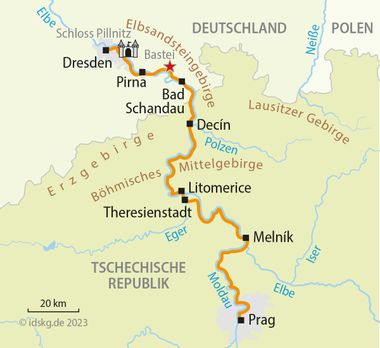
Prices / Dates
Services / Info
- Accommodation incl. breakfast in 3- and 4-star hotels, in Melnik in slightly simpler accommodation
- Room with shower/bath/WC
- Luggage transport
- Personal tour information on site
- Digital route guidance via smartphone app
- Tips for tour preparation
- Touristic information
- 7 days hotline service
Below please find more information about the Elbe bike tour Prague - Dresden. If you have any further questions please feel free to contact us by phone: 0049 - (0)6421-886890.
Arrival by train
From Germany Prag is easily accessible by train. We recommend to take a taxi from the station to get to our partner hotels in Prag. Current schedule information and price information can be found here: Train information
Parking facilities at the hotel
We recommend leaving your car in Dresden and travelling to Prague by transfer or train before your trip. Parking fees in Dresden are approximately €200 per week in the hotel garage.
In Prague, you can park in an underground car park for approximately €16 per day.
More detailed information is included in your travel documents.
Condition of the cycle path
From Prague to Melnik, there are a few gentle inclines to overcome, but otherwise it is a consistently easy route along the Elbe Cycle Route. Some paths are partially unpaved.
Available rental bikes
Comfortable touring bikes with hub gears and coaster brakes or derailleur gears without coaster brakes (all unisex models). Alternatively, electric bikes are available. Simply specify your bike preference when booking.
Return to the starting hotel
Return transfer in a comfortable minibus, including bike and luggage transport. The driver will come to your hotel and has space for you, your luggage and, if necessary, your private bike. He will drive you back to your starting hotel, ensuring a perfect return service without any hassle of changing trains or lugging suitcases.
Extra costs which are not included in the tour price
A possible tourist tax and charging fees for bicycle batteries are also not included in the tour price and must therefore be paid at the hotel on site.
7 day hotline service
Just in case the bike chain breaks, flooding makes it impossible to continue your tour or any other nasty surprise: You can reach us seven days a week and we will do anything to help you as fast as possible.
Passport and visa requirements
For EU citizens, there are no special passport or visa requirements and no health formalities to be considered for this trip.
Travel insurance
The tour price already includes the statutory insolvency insurance. In addition, we recommend that you take out travel cancellation insurance upon receipt of your travel confirmation in order to protect yourself against financial disadvantages in the event of travel cancellation, interruption of travel, illness or accident.
For this trip, we recommend using digital travel documents in the spirit of sustainability. However, you can still select printed travel documents with a cycling map during the booking process if you wish.
Please note that prices may vary depending on your selection.

I provide you with advice and assistance
Steffi Groß
